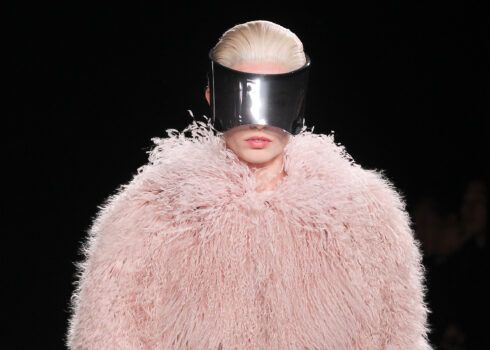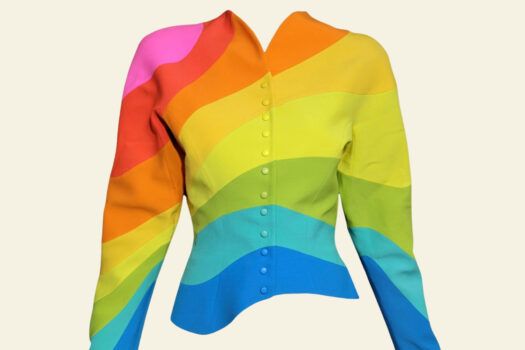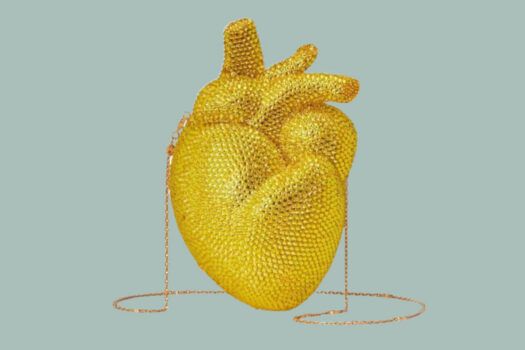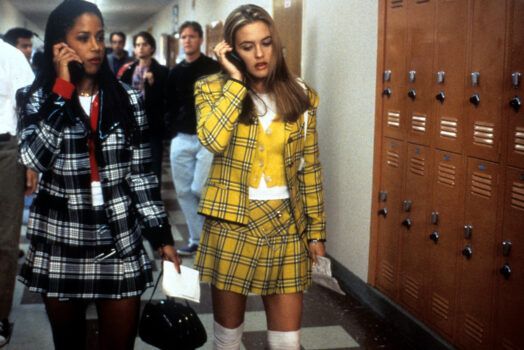
If you’re struggling to gift your father, husband, brother, uncle, boyfriend, etc., consider the cufflink. For the dapper male, a pair of cufflinks is a welcome addition to his sartorial arsenal. For the disheveled male, it’s a high-impact nudge in the right direction — since cufflinks of course beget proper dress shirts. And, with the holidays just around the corner, we thought we’d make things easy by creating a buying guide to help you in your search for the perfect pair.
First off, a quick history lesson. Cufflinks rose to popularity in the 1800s and have been a staple of men’s fashion ever since. In the 19th century, cuffs and collars — the parts of shirts that undergo the most wear and tear — were made stiffer for durability. Unfortunately, that also made them too stiff to secure with a simple button. While the first iteration of cufflinks served very utilitarian purpose, the Duke of Windsor popularized more colorful versions in the early 20th century, making them one of the first pieces of jewelry acceptable for men to wear. Today, men’s cufflinks come in a wide variety of styles and materials. Read on for an in-depth look.
Materials
The first decision to make — and one that will largely govern the price point — is material. Consider the environment of the wearer: Will he attend business meetings? Formal balls? Private clubs? The cufflinks should be appropriate for the intended venue and occasion. Generally, men’s cufflinks should watch a wearer’s watch, but not match his tie or pocket square. Some of the most popular materials include:
- Gold is a classic, but it’s best suited for formal occasions. If you’re looking for an everyday option, you may want to consider a more understated material.
- Platinum is usually more expensive than gold as it’s stronger, denser, and more resistant to corrosion. It has a whiter appearance than silver or stainless steel and is also a bit heaver than both.
- Titanium is more lightweight and has a grayer cast than platinum, silver or stainless steel. Titanium cufflinks frequently come with a more moderate price tag, and are suitable for almost any occasion. It also happens to be durable, and corrosion-resistant.
- Carbon Fiber is a relative newcomer to the jewelry scene — up close, you can see that carbon fiber is actually woven together using carbon atoms, giving it the look of gray metallic cloth. What man doesn’t want jewelry made of the same stuff used to build ultra-light Formula One race cars?
- Gunmetal is a bronze alloy with a dark grey hue. It’s a durable and affordable option — which makes it ideal if you’re buying in multiples, like for groomsmen at a wedding.
- Rose gold gets its pinkish cast from being a mixture of gold and copper. Again, it’s best suited to formal events.
- Stainless steel is a resilient metal with a classic silvery color. Stainless steel is favored for its versatility, relatively inexpensive price tag and the fact that it won’t tarnish or irritate the skin. Unlike other materials, stainless steel is not poured into a mold to make cufflinks. Instead, it is cut from a solid piece of metal, leaving no weak spots or seams.
- Silver cufflinks typically come in two forms, pure silver and sterling silver. Sterling is a combination of silver and copper. Pure silver is incredibly lustrous, but is less durable than an alloy.
- Silk and other fabric cufflinks are casual, colorful options that typically comes in cord and knot styles. More on those styles and others below.
- Enamel is great if you’re looking to add a splash of color. The powdered glass is fused to create a smooth and durable glossy material.
- Glass is another option, and more resilient than it sounds. Glass cufflinks should be similar to the texture and look of marbles.
- Precious stones — crystal, abalone and hematite are all common — all add a bit of flair when set in metal cufflinks. Prices can vary widely depending on the stone used.
Styles
After deciding on a material, the next step is to choose a design. Here are a few of the most common styles:
- Toggle closure, also known as bullet back, is the most common style of cufflink today and consists of a swivel bar hinged between two posts. Turn the bar parallel to the posts when inserting through the button hole, then turn it 90 degrees to fasten.
- Whale back cufflinks work similar to toggle closures but feature a single post connected to a flat tail by a hinge.
- Ball return and stud cufflinks have no moving parts. They have fixed backs that are more secure than toggle closures and whale backs, but they are more difficult to put on.
- Chain link and double panel cufflinks are the most traditional styles. They feature two identical heads held together by a metal chain.
- Cord and knot styles are mostly limited to fabric cufflinks. They feature two knotted ends held together by a piece of the material used to make them.
Brands
As with any almost any type of jewelry, you can choose from hundreds of brands and designers. The wide selection can be a little overwhelming, so here are a few of the bigger names to help narrow the search.
- Cartier specializes in sterling silver and gold cufflinks in a range of styles. Pricing for silver pairs begins around $300, and gold pairs start at around $1,700. You can find a wide selection of both contemporary and vintage Cartier cufflinks on 1stdibs.
- Tiffany & Co offers a wider variety of metals including gold, silver, stainless steel and titanium as well as a range of styles. Prices range from $200 to $7,000.
- Bulgari is also mostly limited to silver and gold, but offers a larger choice of gemstones and engravings than Tiffany and Cartier. They range in price from about $400 to $6,000.
- Deakin and Francis is famous for its playful, whimsical designs. Skulls, scorpions, sharks, and spiders are among the many decorative cufflinks made by this high-end brand. Prices range from $300 to more than $10,000.
- Trianon makes a vast variety of cufflinks, but it’s especially good for pairs that incorporate gemstones and pearls. Their unique but classic look is certain to be the envy of onlookers.
Shirt modification
If you plan on your giftee to unwrap his new pair of cufflinks on Christmas morning and then wear them to Christmas dinner, keep in mind that you may need to modify his shirt. That means removing the button and making a second buttonhole where the stud goes through. If you’re skilled with a needle and thread, check out this tutorial. Otherwise, it should be a quick job for your local tailor.
Piqued your interest? Shop antique and vintage cufflinks on 1stdibs.




